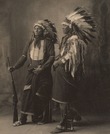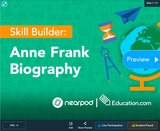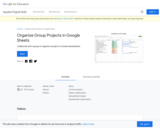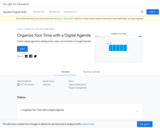
Students will create a digital storytelling documentary on a Native American tribe of Utah.
- Subject:
- History
- Material Type:
- Activity/Lab
- Lesson Plan
- Media Object
- Author:
- Amanda
- Date Added:
- 06/11/2022

Students will create a digital storytelling documentary on a Native American tribe of Utah.

This is a great resource to use with Financial Literacy students. It is a brief overview of Investing to help you get started on your unit in Investing.
https://np1.nearpod.com/sharePresentation.php?code=f760f7d935dc8dfaed1c1185d7955870-1&oc=user-created&utm_source=link

In this social studies skill builder, students will learn about the life and death of Anne Frank. Students will be able to recognize what it means to empathize with the experience of others after reading about Anne Frank's life. This skill builder is most appropriate for students in 6th, 7th, and 8th grade. It is estimated this lesson will take about 15-25 minutes to complete. Through virtual field trips, class collaboration, and independent practice, students use reading comprehension and observation skills to learn about Anne Frank and her family's life before and during World War II. They will also learn about the trials and hardships the Jewish people faced and the importance of empathizing with others.
Thumbnail: screenshot of Nearpod lesson by Christina Nelson 7/27/2022

Honeybees, along with a few other key animals, are critical to human existence on our planet. Along with honey production, these insects provide the vital role of pollination of many trees and plants that provide food for our survival. In 2007, the term Colony Collapse Disorder (CCD) was created to describe the decline of honeybee populations around the world.[1] Bee decline can be attributed to factors such as viruses, pesticides, predators, habitat destruction, and environmental conditions.

This lesson centers around the How AI Works: Neural Networks video from the How AI Works video series. Watch this video first before exploring the lesson plan.
Students learn how neural networks work. They first discuss an example of an experience that recommends things to you. They then use a widget that recommends videos based on one person. Students watch a video explaining neural networks. They use an updated widget to adjust the weights of each person. Finally, students discuss the need for diverse perspectives when creating recommendation systems.
This lesson can be taught on its own, or as part of a 7-lesson sequence on How AI Works. Duration: 45 minutes

Using segments from the film Dutch New York, students learn about the early years of the New Netherland colony and identify economic, political and social objectives of the Dutch West India Company, the settlers of the colony, and the native population. Then, they role play a scenario from the perspective of each of these three groups.

In 2014, the world saw the infectious Ebola virus spreading in western Africa. Throughout human history, epidemics have come and gone with some infecting and/or killing thousands and lasting for years and others taking less of a human toll. Some believe these events are just nature’s way of controlling the growth of a species while others think they could be a conspiracy or deliberate act to cause harm. This problem will most likely come down to how to expend (or not expend) scarce resources (doctors, containment facilities, money, research, serums, etc...) to deal with a crisis.

In the years immediately following the American Revolution, many citizens still felt ill-at-ease with the state of the union. Patriots felt the right to assert their victory over the land, and Loyalists felt oppressed and belittled over their defeat.

Noemi Hernandez-Balcazar grew up in Mexico City where she developed a lifelong love for art and celebrations, such as Day of the Dead, or Día de los Muertos. Now an artist and educator in Salt Lake City, she shares her insights into this iconic Mexican celebration. Her first-hand knowledge provides a pathway to appreciating art, food, folklore, music, history, and Mexican cultural values.

In this lesson, students will explore the expeditions of four French explorers. After viewing three short videos about Samuel de Champlain, Louis Jolliet and Jacques Marquette, and René-Robert Cavelier, Sieur de la Salle, students will analyze a painting that shows Champlain leading a fleet of canoes on an expedition and then read journal entries that describe Jolliet and Marquette’s expeditions. The lesson will conclude with students creating a game that encompasses the travels, settlements, and expansion of French territory in North America during the 1600s.

This lesson guides students through the Cuban Revolutioin, the Bay of Pits Invasion, and the Cuban Missile Crisis of October 1962. Includes readings and assessments.

Help students organize groups and projects within Google Sheets.

Create an agenda within Google Calendar.

Students undertake the task of organizing their ideas by grouping individual ideas together into clusters of related content in this lesson plan from NOVA Education. Once the organization process is complete, the students generate a list of criteria that they then use to judge the viability of their ideas in the real world.

This lesson centers around the How AI Works: Privacy and the Future of Work video from the How AI Works video series. Watch this video first before exploring the lesson plan.
In small groups, students conduct research using articles and videos that expose ethical pitfalls in an artificial intelligence area of their choice. Afterward, each group develops at least one solution-oriented principle that addresses their chosen area. These principles are then assembled into a class-wide “Our AI Code of Ethics” resource (e.g. a slide presentation, document, or webpage) for AI creators and legislators everywhere.
This lesson can be taught on its own, or as part of a 7-lesson sequence on How AI Works. Duration: 45 minutes

Advertises itself as "instant access to tens of thousands of classroom-ready, digital resources." Videos, games, audio clips, photos,lesson plans, etc.

Learn about how to connect Google for Edu in your classroom with personalized, competency-based learning!

This is the first step in a series of lessons that would ultimately lead to the creation of a travel guide video. Students will be researching a country's dominant culture using the Utah Online School Libraries' access to CultureGrams.Image from Pixabay, accessed 2/18/2022.

In this lesson, students will learn about Eleanor Rooseveltâ"s diligence in helping to craft the U.N. Declaration of Human Rights. Students will learn how their diligence can help them advance freedom for themselves and others.

In this lesson, students will learn more about Charlie Russell and his work by watching videos and looking closely at his art. Then they will create their own piece of art, a meme, or an illustrated photo, that shows what they learned about Charlie Russell.